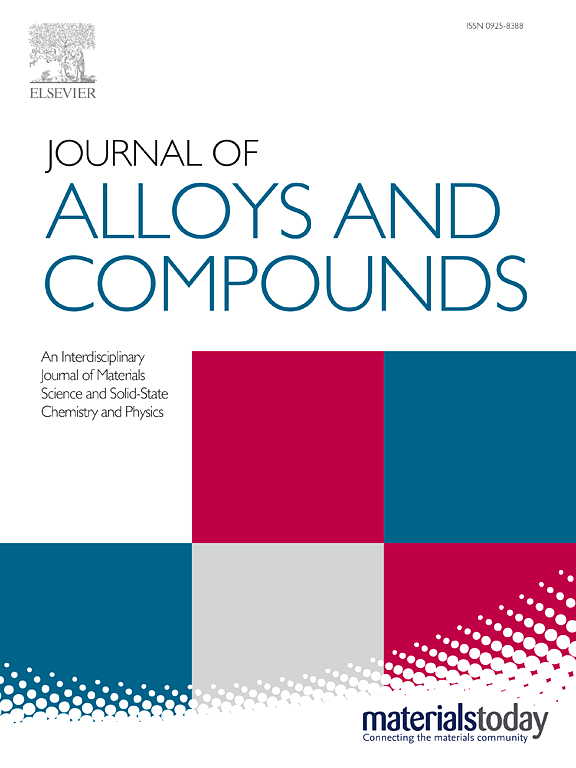Si含量对激光增材制造Al-XSi-3Cu-5Mg合金组织和导热性的影响
IF 5.8
2区 材料科学
Q2 CHEMISTRY, PHYSICAL
引用次数: 0
摘要
高硅铝合金以其优异的热物理性能被广泛应用于散热器件中,是热管理研究的一个热点。硅的加入赋予合金许多有益的属性;然而,过量的硅可能导致导热性能下降。为了研究合金体系中的最佳硅含量,本研究采用激光增材制造方法制备了不同硅浓度的Al-Si-3Cu-5Mg合金。进行了全面的微观结构表征,以及系统的耐磨性和热性能评估。结果表明:随着硅含量的增加,合金硬度从134 HV逐渐升高到326 HV,摩擦系数从0.5降低到0.22左右,耐磨性显著增强;导热系数呈线性下降趋势,从227 W/(m·K)降至140 W/(m·K)左右,与热膨胀系数呈反比关系。这些现象归因于在增材制造过程中硅与添加的铜和镁元素之间复杂的相互作用。该研究为优化合金成分以提高工业应用中散热器的效率提供了有价值的见解。此外,建立了计算导热系数的数学模型,并与实验测量值进行了全面比较,结果表明该模型能较好地解释实验结果。本文章由计算机程序翻译,如有差异,请以英文原文为准。
The Effect of Si Content on the Microstructure and Thermal Conductivity of Al-XSi-3Cu-5Mg Alloys Produced by Laser Additive Manufacturing
High-silicon aluminum alloys are widely utilized in heat dissipation devices due to their outstanding thermophysical properties and represent a major focus in thermal management research. The incorporation of silicon imparts numerous beneficial attributes to the alloy; however, an excessive amount of silicon may result in a decline in thermal conductivity. To investigate the optimal silicon content within the alloy system, this study employed laser additive manufacturing to fabricate Al-Si-3Cu-5Mg alloys with varying silicon concentrations. Comprehensive microstructural characterization was conducted, alongside systematic evaluations of wear resistance and thermal performance. The results demonstrate that as the silicon content increases, hardness rises progressively from 134 HV to 326 HV, the friction coefficient decreases from 0.5 to approximately 0.22, and wear resistance is significantly enhanced. Meanwhile, thermal conductivity exhibits a linear decreasing trend, dropping from 227 W/(m·K) to around 140 W/(m·K), and shows an inverse relationship with the coefficient of thermal expansion. These phenomena are attributed to the complex interactions between silicon and the added copper and magnesium elements during the additive manufacturing process. This study provides valuable insights for optimizing alloy compositions to improve the efficiency of heat sinks in industrial applications. Furthermore, a mathematical model for calculating thermal conductivity is developed, and a thorough comparison with experimentally measured values indicates that the model offers a satisfactory interpretation of the experimental outcomes.
求助全文
通过发布文献求助,成功后即可免费获取论文全文。
去求助
来源期刊

Journal of Alloys and Compounds
工程技术-材料科学:综合
CiteScore
11.10
自引率
14.50%
发文量
5146
审稿时长
67 days
期刊介绍:
The Journal of Alloys and Compounds is intended to serve as an international medium for the publication of work on solid materials comprising compounds as well as alloys. Its great strength lies in the diversity of discipline which it encompasses, drawing together results from materials science, solid-state chemistry and physics.
 求助内容:
求助内容: 应助结果提醒方式:
应助结果提醒方式:


